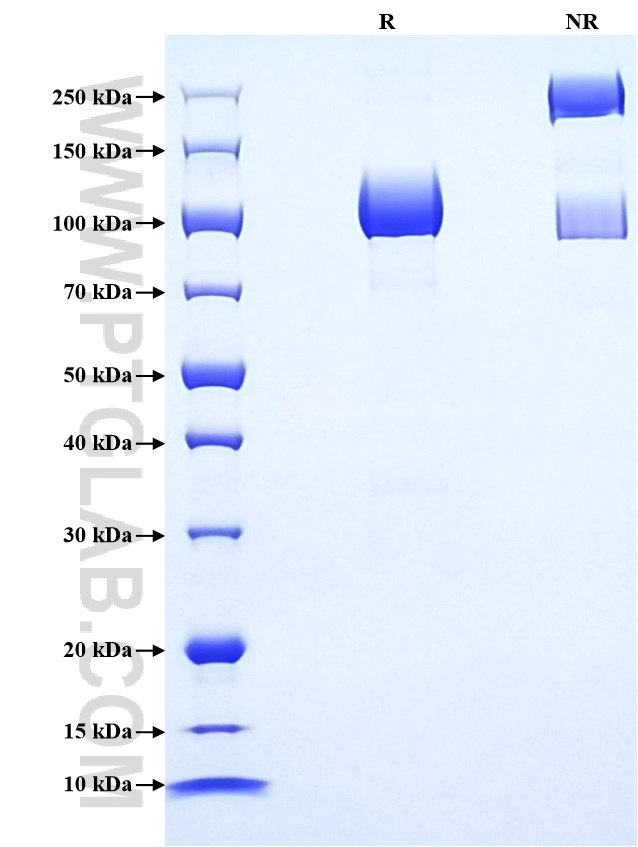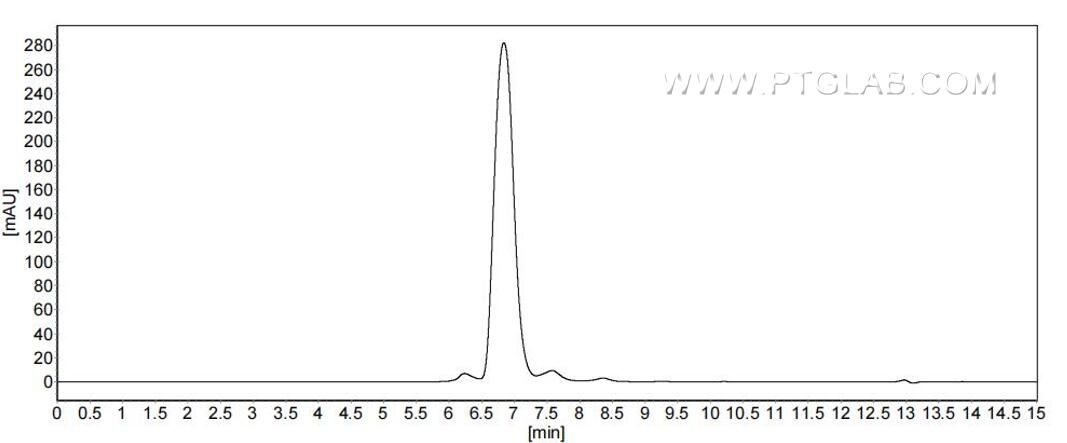Recombinant Mouse CD146/MCAM protein (rFc Tag) (HPLC verified)
种属
Mouse
纯度
>90 %, SDS-PAGE
>90 %, SEC-HPLC
标签
rFc Tag
生物活性
未测试
验证数据展示
产品信息
| 纯度 | >90 %, SDS-PAGE >90 %, SEC-HPLC |
| 内毒素 | <0.1 EU/μg protein, LAL method |
| 生物活性 |
Not tested |
| 来源 | HEK293-derived Mouse CD146 protein Val24-Val563 (Accession# Q8R2Y2-1) with a rabbit IgG Fc tag at the C-terminus. |
| 基因ID | 84004 |
| 蛋白编号 | Q8R2Y2-1 |
| 预测分子量 | 85.8 kDa |
| SDS-PAGE | 100-110 kDa, reducing (R) conditions |
| 组分 | Lyophilized from 0.22 μm filtered solution in PBS, pH 7.4. Normally 5% trehalose and 5% mannitol are added as protectants before lyophilization. |
| 复溶 | Briefly centrifuge the tube before opening. Reconstitute at 0.1-0.5 mg/mL in sterile water. |
| 储存条件 |
It is recommended that the protein be aliquoted for optimal storage. Avoid repeated freeze-thaw cycles.
|
| 运输条件 | The product is shipped at ambient temperature. Upon receipt, store it immediately at the recommended temperature. |
背景信息
CD146, also known as melanoma cell adhesion molecule (MCAM) or MUC18, originally identified as a biomarker of melanoma progression, is a transmembrane glycoprotein of 113-130 kDa, belonging to the immunoglobulin (Ig) superfamily. Structurally, it consists of five Ig domains, a transmembrane domain, and a cytoplasmic region. In normal adult tissue, CD146 is primarily expressed by vascular endothelium and smooth muscle. CD146 is a key cell adhesion protein in vascular endothelial cell activity and angiogenesis, and has been used as marker of circulating endothelium cells (CECs). In addition to the membrane-anchored form of CD146, a soluble form of CD146 (sCD146, 105 kDa) has also been found in human plasma and in the supernatant of cultured human endothelial cells.
参考文献:
1. Sers C. et al. (1993). Proc Natl Acad Sci U S A.15;90(18):8514-8. 2. Keller T. et al. (2015). PLoS One. 20;10(5):e0127169. 3. Bardin N. et al. (1998). FEBS Lett. 2;421(1):12-4. 4. Bardin N. et al. (2009). Arterioscler Thromb Vasc Biol.29(5):746-53. 5. Bardin N. et al. (2006). Inflamm Bowel Dis.12(1):16-21. 6. Bardin N. et al. (2003). Thromb Haemost. 90(5):915-20.

